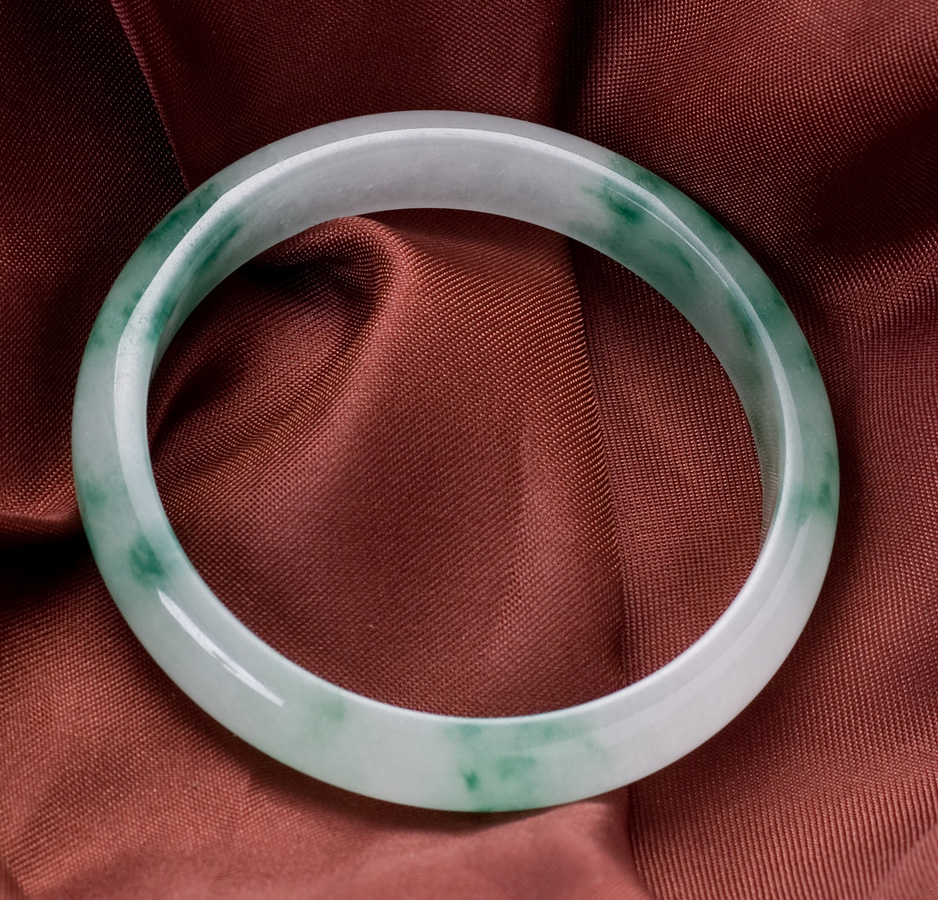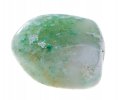For centuries jade was thought to be a single gemstone, but in 1863 two types were recognized: jadeite and nephrite. Nephrite is more common, but both are tough, fine-grained rocks, suitable for carving. Jadeite, made up of interlocking, granular pyroxene crystals, occurs in a wide range of colors including green, lilac, white, pink, brown, red, blue, black, orange and yellow. The most prized variety, imperial jade, is a rich emerald green, due of chromium. Jadeite commonly has a dimpled surface when polished.
Jadeite is found in metamorphic rocks and as alluvial pebbles and boulders. Some boulders develop a brown skin, due to weathering, and this is often incorporated into carvings and worked pieces. The most important source of jade is Burma, which has supplied China with translucent imperial jade for over 200 years. Historically, Guatemala was an important source of jade, providing the material for the carvings of the Central American Indians. Jadeite also occurs in Japan and California (USA).
The Spanish conquistadores adopted the use of jadeite when they invaded Central America, and often wore amulets made from it. They called it piedra de hijada (loin stone) or piedra de los rinones (kidney stone), believing it prevented or cured hip and kidney complaints





























Leave a Reply
You must be logged in to post a comment.